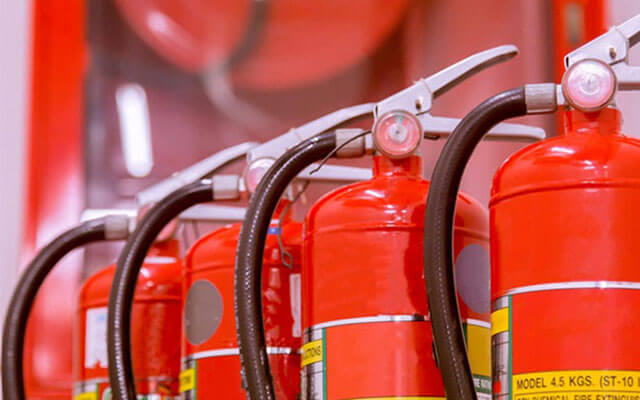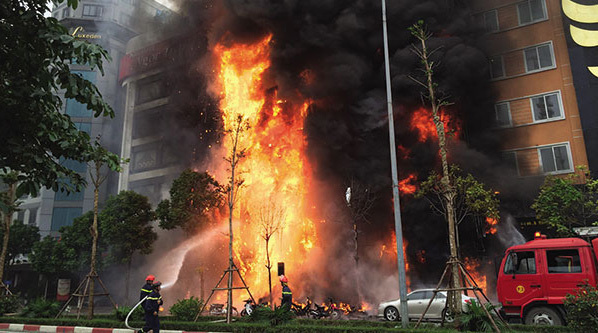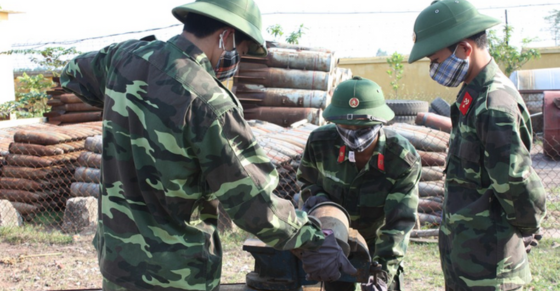Fire safety requirements for residential areas in Vietnam
What are the regulations on fire safety requirements for residential areas in Vietnam? - Minh Hoa (HCMC)

Fire safety requirements for residential areas in Vietnam (Internet image)
Regarding this issue, LawNet would like to answer as follows:
1. What is residential area?
According to Clause 1, Article 6 of Decree 136/2020/ND-CP, residential area is a place where individuals and households live as parts of a village, hamlet, mountain village, neighborhood and equivalent residential unit (hereinafter collectively referred to as “village”).
A village is a residential area subject to fire management.
|
A residential area at high risk of fire and explosion is a residential area and meeting any of the following criteria: - A handicraft village engaging in manufacturing and/or trade of goods posing fire or explosion hazard is located inside the residential area. - At least 20% of total households in the residential area engage in manufacturing and/or trade of goods/chemicals posing fire or explosion hazard. - A facility for processing, producing and/or preserving petroleum and petroleum products, gas and/or chemicals posing fire or explosion hazard; a terminal for petroleum and petroleum products, a terminal for gas and/or chemicals posing fire or explosion hazard; or a filling station is located inside the residential area. (Article 6 of Circular 149/2020/TT-BCA) |
2. Fire safety requirements for residential areas in Vietnam
Residential areas must satisfy the following fire safety requirements:
(i) Regulations on fire prevention and fighting and use of electricity, fire, flammable materials and explosives are provided in accordance with technical regulations and standards on fire prevention and fighting or regulations of the Ministry of Public Security;
(ii) There are sufficient and quality traffic system, water supply for firefighting, fire spread preventing solutions and, fire prevention and fighting equipment in accordance with technical regulations and standards on fire prevention and fighting or regulations of the Ministry of Public Security;
(iii) There is a firefighting plan approved by the competent authority.
(iv) There are a neighborhood having received training in fire prevention and fighting operation and on-site combat-ready firefighters.
* Note: Chairpersons of commune-level People’s Committees must organize and maintain compliance with the fire safety requirements above throughout the existence of the residential areas.
(Clause 2, 3, Article 6 of Decree 136/2020/ND-CP)
3. Prohibited acts in fire safety in residential areas in Vietnam
Specifically, in Article 13 of the Law on Fire Prevention and Fighting 2001 (amended 2013), prohibited acts in fire prevention and fighting in residential areas include:
- Intentionally causing fire or explosion, thus harming people's life and health; causing material losses to the State, agencies, organizations and individuals; exerting adverse impacts on the environment, social security, order and safety.
- Obstructing fire prevention and fighting activities; opposing people performing the fire prevention and fighting task.
- Making corrupt use of fire prevention and fighting to harm the human life and health; infringing upon the property of the State, agencies, organizations and individuals.
- Giving a sham fire alarm.
- Failing to alarm the fire upon the conditions for fire alarm; delaying the fire alarm.
- Producing, storing, transporting, using and illegally trading substances at risk of fire and explosion;
- Carrying goods and inflammable and explosive substances to places crowded with people;
- Performing works at risk of fire and explosion, high-rise buildings and commercial centers without design approved for fire prevention and fighting; accepting and putting the works at risk of fire and explosion, the high-rise buildings and commercial centers into use when they are not eligible for ensuring the safety of fire prevention and fighting;
- Apropriating, damaging, arbitrarily changing, moving or obscuring the means and equipment of fire prevention and fighting, signs, signposts and impeding the escape exits.
- Other acts violating the regulations of law on fire prevention and fighting.
Nguyen Thi Hoai Thuong
- Key word:
- fire safety
- in Vietnam
- Cases of land rent exemption and reduction under the latest regulations in Vietnam
- Economic infrastructure and social infrastructure system in Thu Duc City, Ho Chi Minh City
- Regulations on ordination with foreign elements in religious organizations in Vietnam
- Increase land compensation prices in Vietnam from January 1, 2026
- Determination of land compensation levels for damage during land requisition process in Vietnam
- Who is permitted to purchase social housing according to latest regulations in Vietnam?
-

- Strengthening the management of building order ...
- 10:25, 24/12/2024
-

- Emergency response and search and rescue organizations ...
- 10:29, 11/09/2024
-

- Handling of the acceptance results of ministerial ...
- 09:30, 11/09/2024
-

- Guidance on unexploded ordnance investigation ...
- 18:30, 09/09/2024
-

- Sources of the National database on construction ...
- 16:37, 09/09/2024
-

- Notable new policies of Vietnam effective as of ...
- 16:26, 11/04/2025
-
.Medium.png)
- Notable documents of Vietnam in the previous week ...
- 16:21, 11/04/2025
-
.Medium.png)
- Notable documents of Vietnam in the previous week ...
- 16:11, 02/04/2025
-
.Medium.png)
- Notable new policies of Vietnam to be effective ...
- 16:04, 02/04/2025
-
.Medium.png)
- Notable new policies of Vietnam effective from ...
- 14:51, 21/03/2025
 Article table of contents
Article table of contents
